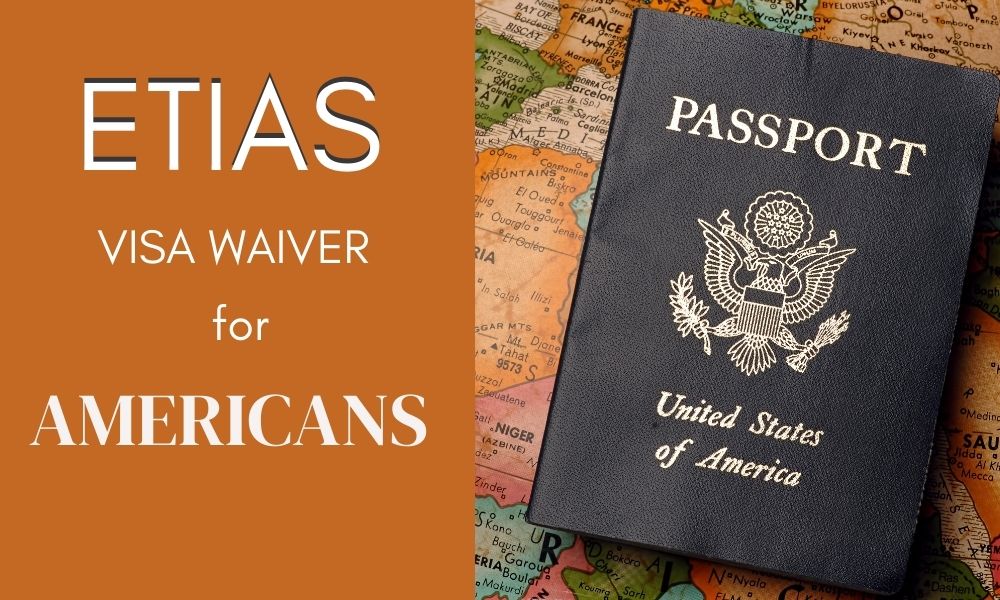
Will Americans need the ETIAS Authorization in 2022?
By jmarble on Wed, 10/27/2021 - 23:43
For Americans, the paperwork for traveling to Europe is going to change soon.
Beginning in 2022, all short-stay American travelers to the Schengen Area of Europe will need to apply for an ETIAS waiver, sometimes known as the ETIAS visa. Learn more about ETIAS and how American travel to Europe is changing.
Will I need a visa to enter Europe as an American?
Not necessarily. Beginning in 2022, Americans will need either the ETIAS authorization OR a visa, but what you need will depend on your travel plans and travel purposes.
For most U.S. citizens, you can get by with a passport and ETIAS. This only applies, however, if you are planning a short-term visit— meaning visits up to 90 days.
Americans who plan on staying in Europe for more than 90 days in a 180-day period will need to apply for a visa. This includes long-term travel for work or school. The visa application process is much more time-consuming and costly than the ETIAS application, so don’t go through the hassle if you don’t have to.
What is ETIAS and how is it different from a visa for Europe?
The European Travel Information and Authorization System is essentially a visa waiver. In an effort to create a more secure border, short-term travelers from certain countries (61 countries including the US, to be specific) will need to apply for an ETIAS waiver starting in 2022. We’ll have to get used to the idea that traveling to Europe with just a passport is going to be a thing of the past.
The application process involves confirming your identity and processing your information against several European security databases; a background check means you’re good to travel anywhere within the Schengen Zone for up to 90 days at a time.
A visa, including a Schengen Visa on the other hand, is a much more involved process designed as a background check for long-term stays. This can involve an in-person interview and confirmation of finances, among other things. Most casual American travelers will not require a visa.
How will it change visa-free travel for Americans visiting Europe?
Americans will need to complete a little bit of extra paperwork before traveling to Europe, but you still don’t need to go through to complicated visa process. Traveling from the USA to the EU will mean applying for security clearance in advance, but once you’re approved, you’re good to go for the next three years.
What is the Schengen area and what countries does it include?
The Schengen area is a 26-country region of Europe comprised mostly of European Union countries. Citizens of this region may travel and trade freely with other member nations.
The 26 Schengen countries are Austria, Belgium, Czech Republic, Denmark, Estonia, Finland, Germany, Greece, Hungary, Iceland, Italy, Latvia, Liechtenstein, Lithuania, Luxembourg, Malta, Netherlands, Norway, Poland, Portugal, Slovakia, Slovenia, Spain, Sweden, and Switzerland.
Which Americans will need the ETIAS travel authorization?
All Americans who travel for up to 90 days in any 180-day period will need to apply for ETIAS travel authorization. If you intend to stay for longer, you will need to apply for a traditional visa.
Which countries citizens will need the ETIAS visa waiver?
Foreign nationals from the following countries will need to apply for ETIAS:
Albania, Andorra, Antigua and Barbuda, Argentina, Australia, Bahamas, Barbados, Bosnia and Herzegovina, Brazil, Brunei, Canada, Chile, Colombia, Costa Rica, Dominica, El Salvador, Georgia, Grenada, Guatemala, Honduras, Hong Kong, Israel, Japan, Kiribati, Macau, Macedonia, Malaysia, Marshall Islands, Mauritius, Mexico, Micronesia, Moldova, Monaco, Montenegro, New Zealand, Nicaragua, Palau, Panama, Paraguay, Peru, Saint Kitts and Nevis, Saint Lucia, Saint Vincent, Samoa, San Marino, Serbia, Seychelles, Singapore, Solomon Islands, South Korea, Taiwan, Timor Leste, Tonga, Trinidad and Tobago, Tuvalu, Ukraine, United Arab Emirates, United States of America, Uruguay, Vanautu, Vatican City and Venezuela.
How do I apply for the ETIAS travel waiver?
The application process is 100% online. The application process itself is pretty straightforward, but the application needs to be filled out precisely. For example, a typo in your name could lead to a delay in processing, or even denial of the ETIAS application.
The application will ask for identification confirmation, including passport info and a photo ID, in addition to details like employment and school information. Once you have been approved, the document will be tied digitally to your passport.
How long is the ETIAS waiver valid?
When your application is approved, you will be free cross the Schengen borders for 3 years which is the ETIAS validity period. One of the easy aspects of ETIAS is that once you cross an external Schengen border, you are free to travel across any internal borders without having to fill out any extra paperwork.
In what ways does the new ETIAS system affect my future travel plans?
It just means you have to plan ahead a little bit. It’s estimated that many ETIAS applications will take minutes to process and approve. Others may take a few days, and in rare instances, some applications may take up to 30 days. Basically, if you know you’re planning on European travel in the next few years, apply as soon as it’s convenient so you don’t have a travel delay.












Add new comment